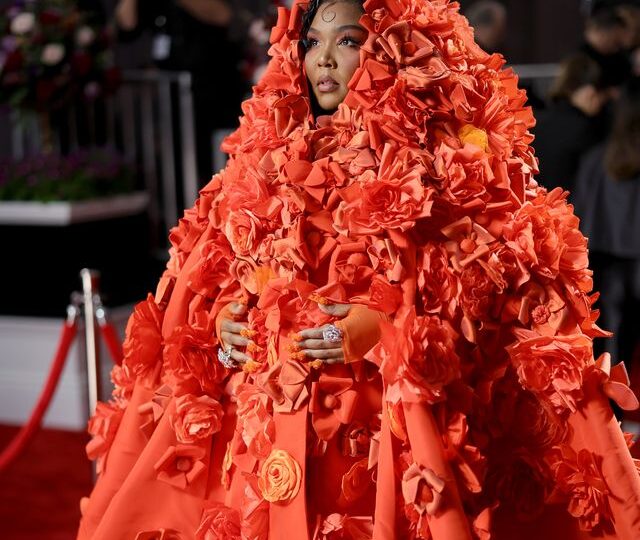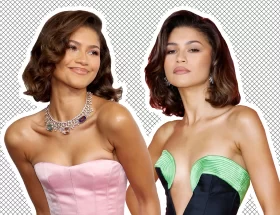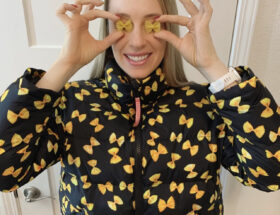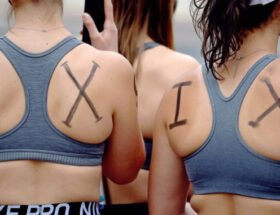From Instagram to Vogue, celebrities are ridiculed for any ensemble they step out in. Whether it be a red carpet or running errands, the public does not hesitate to critique those away from their stylists. In order to get positive press on their style, celebrities must dress in couture-adjacent styles in order to draw attention. One misstep and headlines rewrite reputations.
With the desire to impress and make a statement, celebrities and their stylists are considering all options available. The dress code, however, has been recharacterized. To those such as Lizzo’s ensemble at the 2023 Grammys or Billy Porter’s Fairy Godmother look at the 91st Oscars, it makes many wonder how far celebs will go in order to meet the spotlight.
In hopes to gain positive press, I believe that many celebs are going too far and extreme in their outfits for awards shows. As years go on, it seems that the red carpets at shows such as the Grammys, Oscars, and Golden Globes push the limits in fashion. This is causing many stylists to be pressured into going more extreme each year. This expectation then fails going into events such as the Met Gala, where I find myself disappointed year after year.
These extremes often blur the fine line of dress code at award shows and art events. Couture and camp, the extremes of fashion, should be exclusively for events such as the Met Gala and Fashion Week. In terms of award shows, I believe many celebrities and their teams forget that they can still pull off the feeling that these other styles admit while dressing in award show attire. This concept of attire is not “normal” but more practical and wearable; think of more simple designs without sacrificing the “wow factor.” Designers, stylists, and those gracing the red carpets can still produce positively received garments while following this fine line, but many chose the extreme areas of fashion as an easy way out of the intense expectations they are continuously put under.
Extreme is not always couture. Although couture is used in various ways, it should be worn exclusively at events like the Met Gala and other artistic settings. Couture must be seen more as an art, and less as fashion; it isn’t designed to be worn on the daily. Crossing the lines between reality and fiction, couture focuses on detail and drama – eliciting the trafficked headlines we often run to tell friends about. In rare cases, you see a piece that was included on the couture runway on a red carpet. You may not notice it at first due to the drastic difference in styling. Many of the individual pieces taken apart from a runway outfit look completely different offstage when they’re not dressed up for fashion photographers and thrill-seeking fashion junkies.
Camp, on the other hand, is an aesthetic viewpoint. Camp is considered a more complex mix of art and speech. It is often appealing due to its off by inviting different aspects of perceptions and consumption, camp aesthetics challenge many modern ideas about what constitutes art and what qualifies as high art. This concept is often done by Lady Gaga and other celebrities who have cut through the lines enough that it is now a signature part of their brand. During the 2019 Met Gala which was themed Camp: Notes on Fashion, many celebs proved their illiteracy in fashion by blatantly ignoring the camp theme of that year. This is because most celebs cannot pull camp off. If camp is done, it must be done right.
Couture, again, is the easy way out for many teams. These outfits are often taken straight off the runway from the minds of fabulous creative directors. Custom couture takes months of fittings to perfect. Camp is much more personal and takes time to convey the correct message; things most celebs and their teams struggle to find. That is why these styles should be preserved for events where fashion is the main event, not to overshadow main events.
Instead of putting so much effort into what is being worn, celebrities and their teams should start putting more effort into their musical performances or award speeches where they are able to make an impact. If outfits need to be seen, they should be showcased to enhance one’s talent. Having the red carpet of an event be talked about more than the event itself shows the lack of noteworthy events during the show.
The more extreme ensembles become, the more the clothing takes away from events, such as the Grammys, the Billboard awards, the Oscars, and onwards. Most of these events are intended to celebrate music or movies, not fashion, unlike the Met Gala and Fashion week. Oftentimes people are more focused on what the celebrity is wearing than if the celebrity won an award. Many spend the entire night sitting at tables in the most uncomfortable ultra-complicated garments possible, however, this has become part of the culture. I believe that stepping away from couture and camp statement pieces during award shows while putting in extra time and effort into art pieces for fashion-centered events would be ideal for not only celebrities and their teams, but would help maintain the sanctity of award shows and fashion events of today.







You said that “In terms of award shows, I believe many celebrities and their teams forget that they can still pull off the feeling that these other styles admit while dressing in award show attire. This concept of attire is not “normal” but more practical and wearable; think of more simple designs without sacrificing the “wow factor.” As you mentioned, the proliferation of excessive boundary-pushing fashion at award shows dilutes its shock value. In many ways, the most shocking thing an artist can now do is dress casually!
This is a really interesting opinion piece that I had never really thought of before! I always expect there to be a crazy dress at different award or fashion shows, but never expect someone to just wear something normal. I do think that this expectation is very gendered, for example, straight men still all really just wear various colors of a suit, and nothing too particularly crazy, while women need to go all out.